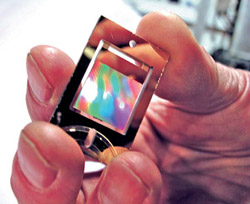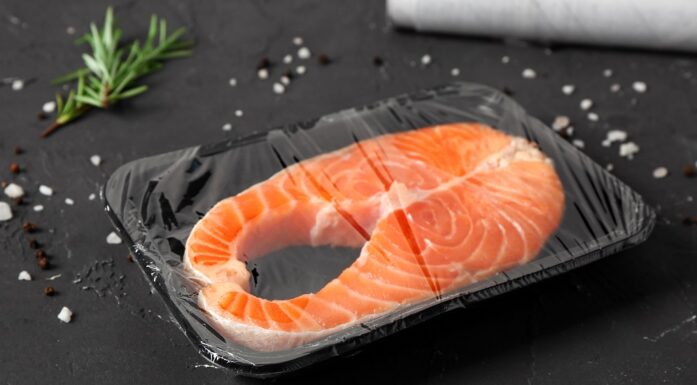Versatile plastic chip
A little plastic chip makes it possible to identify recycled bottles, assure the quality of food and measure our blood sugar levels.
The sensor, which measures 10 mm x 10 mm, can replace advanced, expensive optical devices containing lenses and grids in what are commonly called spectroscopic tools. The sensor is also more reliable than traditional optical devices that require calibrating and maintenance. This chip does not corrode, is robust and provides quick results from analyses. The chips can be produced in the same type of machines that make compact discs. Inventors Odd Løvhaugen and Ib-Rune Johansen recently received SINTEF’s award for outstanding research for developing this technology.
The plastic chip was originally developed to detect different types of plastic; it is now used in bottle recycling machines and in a recently developed CO2 sensor that controls ventilation in buildings. As the chip is so robust, it can be used in harsh environments, such as in the depths of an oil well to detect gases. It can measure both the blood’s oxygen intake and blood sugar levels in the human body. It can also be used in the quality control of food in supermarkets where it measures both fat and water content.
SYNTHETIC HOLOGRAM
The technology in the chip is called DOE,which is an abbreviation for Diffractive Optical element. It is here that the secret lies. The chip contains a synthetic hologram that functions as a light filter. The hologram diffracts the light reflected by an object or gas and is able to identify energy in the infrared spectrum. The hologram is designed to measure the energy at particular wavelengths because each substance emits a number of spectral peaks that are specific to that particular substance. While the eye sees twodimensional figures, a hologram reproduces the light waves instead of the actual object. The chip can therefore be used to identify or check the quality of substances in many contexts, says SINTEF research scientist Odd Løvhaugen.
ALCOHOL
The research scientists have now taken out a patent, based on the same technology, for a device to measure alcohol. The device can test the level of alcohol on the spot in a driver’s blood and, if it is certified to do so, will be able to replace the blood samples that currently need to be tested by forensic laboratories. The scientists say the chip will give less ambiguous results than the traditional methods in use today, which employ traditional spectroscopy.
By Christina B. Winge





